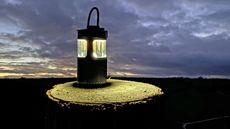Can you find Vega? How about Betelgeuse? Knowing your way around the night sky can help a lot when using a telescope for the first time, which isn’t something that’s widely advertised.
The best telescopes also require a bit of patience and the commitment to learning how to best use and maintain them; even the best telescopes for beginners will need setting up properly before you get good results. Here are three telescope setup mistakes everyone makes to begin with:
1. Failing to align with bright stars

Many low-cost telescopes are ‘Go To’ motorised models that will slew to any object you care to choose from a long list displayed on a hand controller screen or smartphone app. Best of all they’ll stay trained on an object as it appears to move across the night sky.
However, such telescopes still need to be aligned to two or three bright stars, so it helps if you know at least the 10 brightest stars in the night sky and how to locate them from memory at specific times of year.
- How to set up a telescope for observing the night sky
- What to aim your telescope at: your guide to exploring the night sky
- Find dark skies and the best gear with our beginner's guide to stargazing
2. Not learning the night sky

If your telescope is either completely manual or it’s a polar-aligned equatorial telescope then some basic knowledge of the night sky’s geography is essential because you’ll have to aim it at the object to get it into your telescope’s crosshair and this in your eyepiece.
Even if you have a motorised ‘Go To’ telescope it helps to have a basic knowledge of where objects are so you can choose which objects to point your telescope at on any given night. For example, if you’re using your telescope in your back garden then some of the sky is probably going to be blocked by buildings and trees. So it helps enormously if you know which constellations you have a clear view of and which ones are out of reach.
3. Not being patient

If you’ve got a motorised ‘Go To’ telescope then there’s a temptation to go hopping around the night sky very quickly, grabbing a quick look at whatever deep sky objects are ‘up’ that night. Don’t do this. Before you know it you’ll have seen everything you practically can in the night sky and quickly get bored. Worst of all, you won’t have seen much because observing properly takes time and practice.
Move slowly through the ’tonight’s best’ lists of objects and return to them again and again, because the sky’s transparency – which radically changes – can be decisive. Patience also helps with coping with cloudy skies; sometimes you just have to quit and come back another night… which might be weeks away.











